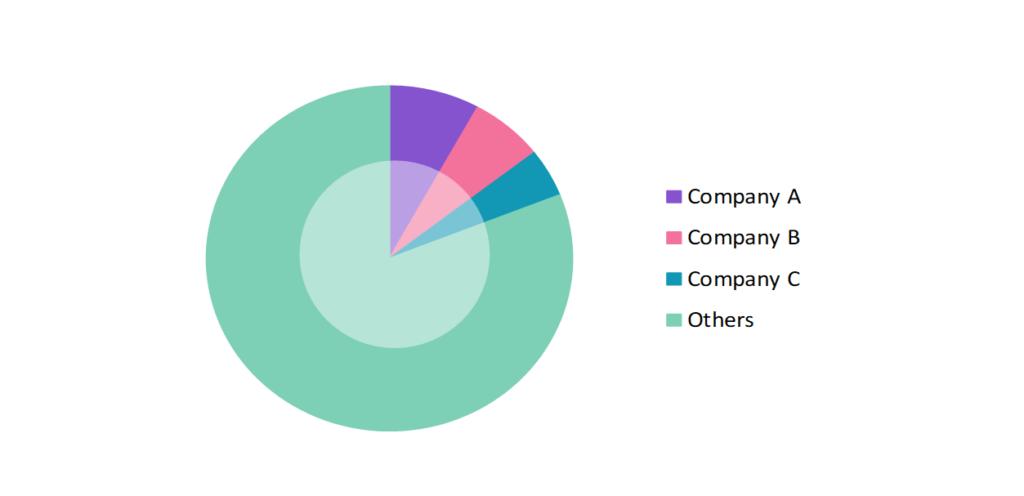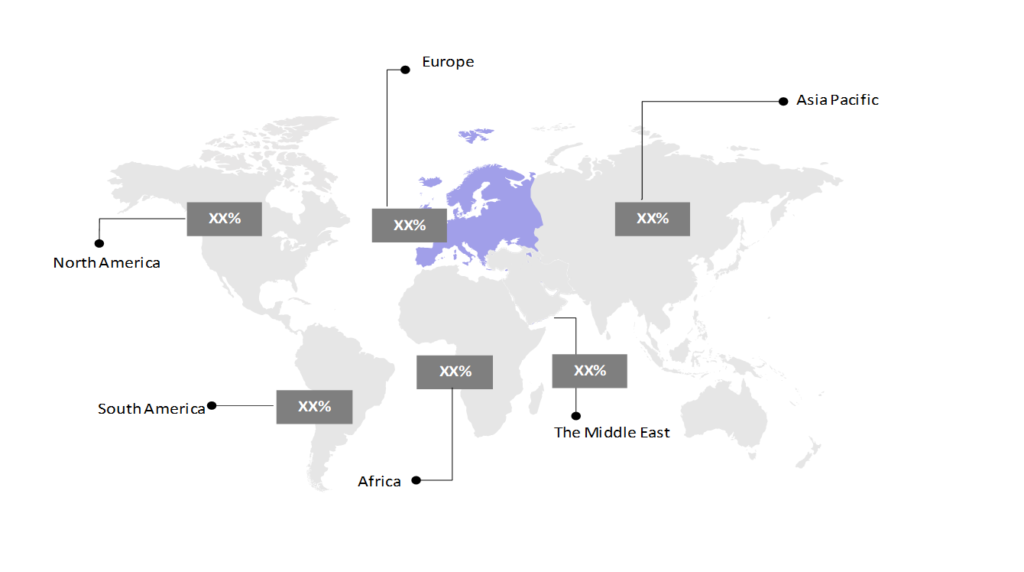Chocolate Market: Size, Share, Trends & Forecast (2024-2029)
The market report offers a detailed analysis segmented by Confectionery Variant (Dark Chocolate, Milk and White Chocolate); by Distribution Channel (Convenience Store, Online Retail Store, Supermarket/Hypermarket, Others); by Geography (North America, South America, Asia Pacific, Europe, The Middle East, Africa).
Outlook

- The chocolate market is estimated to be at USD 121.89 Bn in 2025 and is anticipated to reach USD 150.94 Bn in 2030.
- The chocolate market is registering a CAGR of 4.37% during the forecast period 2025-2030.
- The chocolate market is evolving with increasing demand for healthier, plant-based options and premium products. However, challenges such as counterfeit goods, shifting consumer preferences, and sustainability issues in cocoa sourcing are growing concerns. Seasonal sales and diverse applications provide steady demand, but addressing ethical sourcing and cost pressures is essential for sustained growth. The industry is focused on balancing innovation with responsible practices.
Request a free sample.
Ecosystem

- The participants in the global chocolate industry are always developing their strategies to preserve a competitive advantage.
- Companies are increasingly investing in product innovation, including unique flavors, functional ingredients, and sustainable packaging, to differentiate themselves in a crowded market and appeal to health-conscious consumers.
- Several important entities in the chocolate market include Arcor Group; August Strock KG; Barry Callebaut Group; Cargill, Inc.; Nestlé S.A.; and others.
Ask for customization.
Findings
| Attributes | Values |
|---|---|
| Historical Period | 2019-2023 |
| Base Year | 2024 |
| Forecast Period | 2025-2030 |
| Market Size (2025) | USD 121.89 Bn |
| Market Size (2030) | USD 150.94 Bn |
| Growth Rate | 4.37% CAGR from 2025 to 2030 |
| Key Segments | Confectionery Variant (Dark Chocolate, Milk and White Chocolate); Distribution Channel (Convenience Store, Online Retail Store, Supermarket/Hypermarket, Others); Geography (North America, South America, Asia Pacific, Europe, The Middle East, Africa) |
| Key Vendors | Arcor Group; AUGUST STORCK KG; Barry Callebaut Group; Cargill, Inc.; Nestlé S.A. |
| Key Countries | The US; Canada; Mexico; Brazil; Argentina; Chile; China; India; Hongkong; The UK; Germany; Belgium; France; Switzerland; Saudi Arabia; UAE; Egypt; South Africa |
| Largest Market | Europe |
Get a free quote.
Trends
- Functional and Health-focused Chocolates: Chocolates infused with functional ingredients like probiotics, adaptogens (e.g., ashwagandha), and superfoods (e.g., turmeric, quinoa) are growing in popularity. These products cater to health-conscious consumers who seek indulgence with added health benefits.
- 3D Printed and Customizable Chocolates: 3D printing has revolutionized chocolate production by allowing consumers to create highly personalized and intricate designs that are otherwise impossible with traditional methods. This technology offers the ability to customize chocolates with specific shapes, messages, or logos. Hershey ompany has embraced 3D printing to offer consumers interactive and unique chocolate experiences.
- Plant-based and Vegan Chocolates: As consumer preferences shift toward plant-based diets, chocolate manufacturers are increasingly developing vegan alternatives that cater to this growing preference. Traditional dairy ingredients are being replaced with innovative substitutes like oat milk, coconut milk, almond milk, and rice milk to create creamy, rich textures without animal products.
Speak to analyst.
Catalysts
- Health Benefits of Chocolates: Growing recognition of chocolate’s health benefits, particularly dark chocolate, is driving consumer interest. Known for its high antioxidant content, flavonoids, and potential cardiovascular health benefits, chocolate is increasingly perceived as a guilt-free indulgence. This has boosted demand for premium, dark, and functional chocolates with added nutritional value.
- Wide Range of Applications: Chocolate’s versatility in various applications, from confectionery and bakery products to beverages and cosmetics, enhances its market demand. It is used not only as a stand-alone product but also as an essential ingredient in a diverse range of industries, which allows manufacturers to innovate across multiple segments.
- Expansion of Chocolate in Culinary Applications: The use of chocolate in a wide range of culinary applications, including desserts, beverages, and savory dishes, is increasing. This shift is enhanced by the growing popularity of chocolate-based drinks and desserts in cafes and restaurants, further propelling demand.
Inquire before buying.
Restraints
- Increase in Counterfeit Products: The chocolate industry faces growing challenges with counterfeit products, particularly in premium segments. Fake or substandard chocolates being sold as authentic brands can damage consumer trust, dilute brand value, and negatively impact revenue for legitimate manufacturers. Ensuring product authenticity and combating counterfeiting requires stringent quality control and tracking mechanisms.
- Changing Consumer Preferences: Rapid shifts in consumer preferences, such as the demand for healthier, low-sugar, and plant-based chocolates, pose challenges for traditional chocolate manufacturers. Companies must continuously innovate and adapt their product offerings to meet evolving dietary trends, which can involve costly research, development, and reformulation efforts.
- Growing Sustainability Issues in the Cocoa Industry: The cocoa industry is increasingly under scrutiny for its sustainability practices, including deforestation and poor working conditions. Addressing these complex issues requires significant investment in ethical sourcing, traceability, and fair-trade initiatives, which can increase operational costs and complicate supply chain management.
Personalize this research.
Hotspot

Explore purchase options.
Table of Contents
| 1. Introduction 1.1. Research Methodology 1.2. Scope of the Study 2. Market Overview / Executive Summary 2.1. Global Chocolate Market (2019 – 2023) 2.2. Global Chocolate Market (2024 – 2030) 3. Market Segmentation 3.1. Global Chocolate Market by Confectionery Variant 3.1.1. Dark Chocolate 3.1.2. Milk and White Chocolate 3.2. Global Chocolate Market by Distribution Channel 3.2.1. Convenience Store 3.2.2. Online Retail Store 3.2.3. Supermarket/Hypermarket 3.2.4. Others 4. Regional Segmentation 4.1. North America 4.1.1. The US 4.1.2. Canada 4.1.3. Mexico 4.2. South America 4.2.1. Brazil 4.2.2. Argentina 4.2.3. Chile 4.2.4. Rest of South America 4.3. Asia Pacific 4.3.1. China 4.3.2. India 4.3.3. Hongkong 4.3.4. Rest of Asia Pacific 4.4. Europe 4.4.1. The UK 4.4.2. Germany 4.4.3. Belgium 4.4.4. France 4.4.5. Switzerland 4.4.6. Rest of Europe 4.5. The Middle East 4.5.1. Saudi Arabia 4.5.2. UAE 4.5.3. Rest of the Middle East 4.6. Africa 4.6.1. Egypt 4.6.2. South Africa 4.6.3. Rest of Africa 5. Value Chain Analysis of the Global Chocolate Market 6. Porter Five Forces Analysis 6.1. Threats of New Entrants 6.2. Threats of Substitutes 6.3. Bargaining Power of Buyers 6.4. Bargaining Power of Suppliers 6.5. Competition in the Industry 7. Trends, Drivers and Challenges Analysis 7.1. Market Trends 7.1.1. Market Trend 1 7.1.2. Market Trend 2 7.1.3. Market Trend 3 7.2. Market Drivers 7.2.1. Market Driver 1 7.2.2. Market Driver 2 7.2.3. Market Driver 3 7.3. Market Challenges 7.3.1. Market Challenge 1 7.3.2. Market Challenge 2 7.3.3. Market Challenge 3 8. Opportunities Analysis 8.1. Market Opportunity 1 8.2. Market Opportunity 2 8.3. Market Opportunity 3 9. Competitive Landscape 9.1. Arcor Group 9.2. AUGUST STORCK KG 9.3. Barry Callebaut Group 9.4. Cargill, Inc. 9.5. Nestlé S.A. 9.6. Company 6 9.7. Company 7 9.8. Company 8 9.9. Company 9 9.10. Company 10 |
Know the research methodology.
Chocolate Market – FAQs
1. What is the current size of the chocolate market?
Ans. In 2025, the chocolate market size is USD 121.89 Bn.
2. Who are the major vendors in the chocolate market?
Ans. The major vendors in the chocolate market are Arcor Group; AUGUST STORCK KG; Barry Callebaut Group; Cargill, Inc.; Nestlé S.A.
3. Which segments are covered under the chocolate market segments analysis?
Ans. The chocolate market report offers in-depth insights into Confectionery Variant, Distribution Channel, and Geography.
